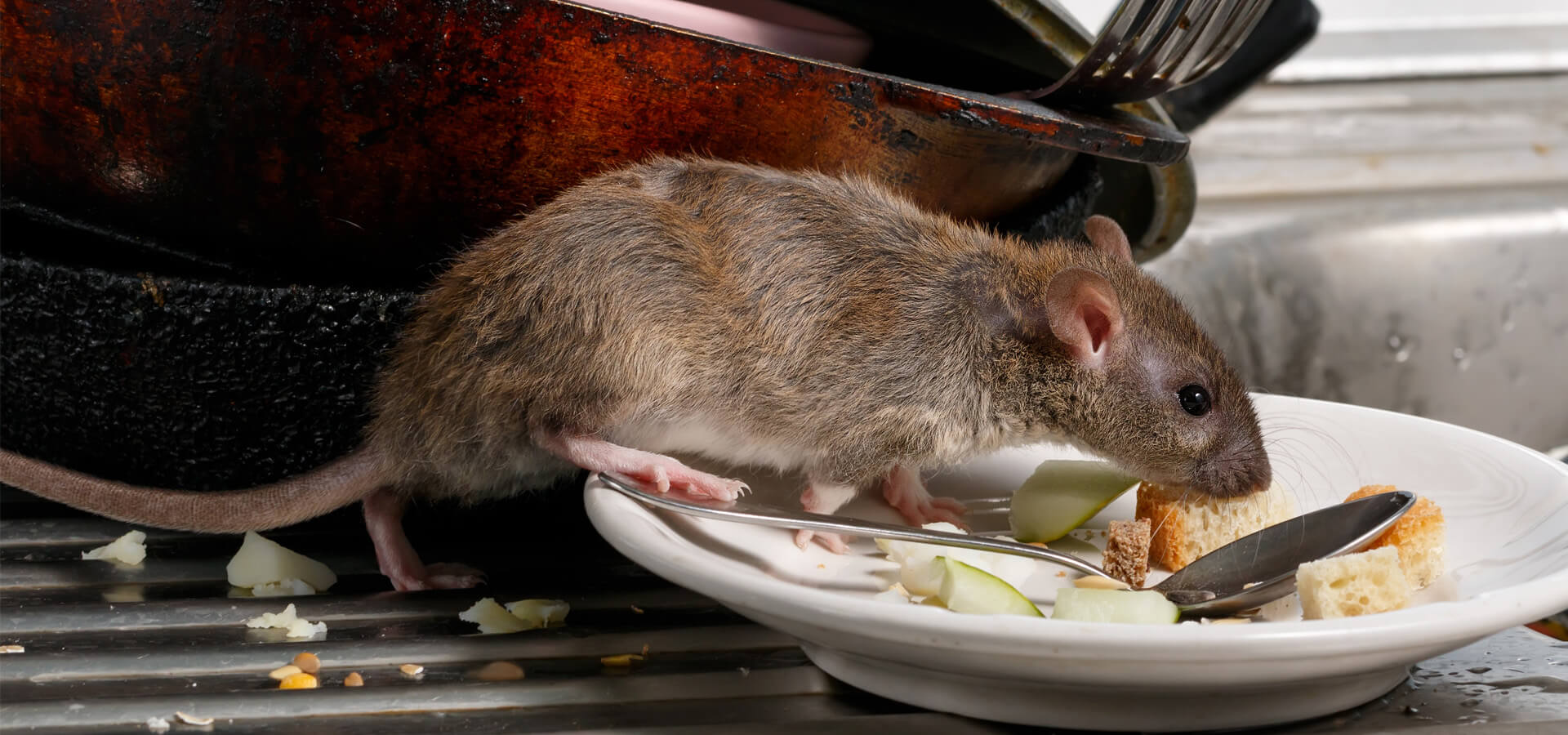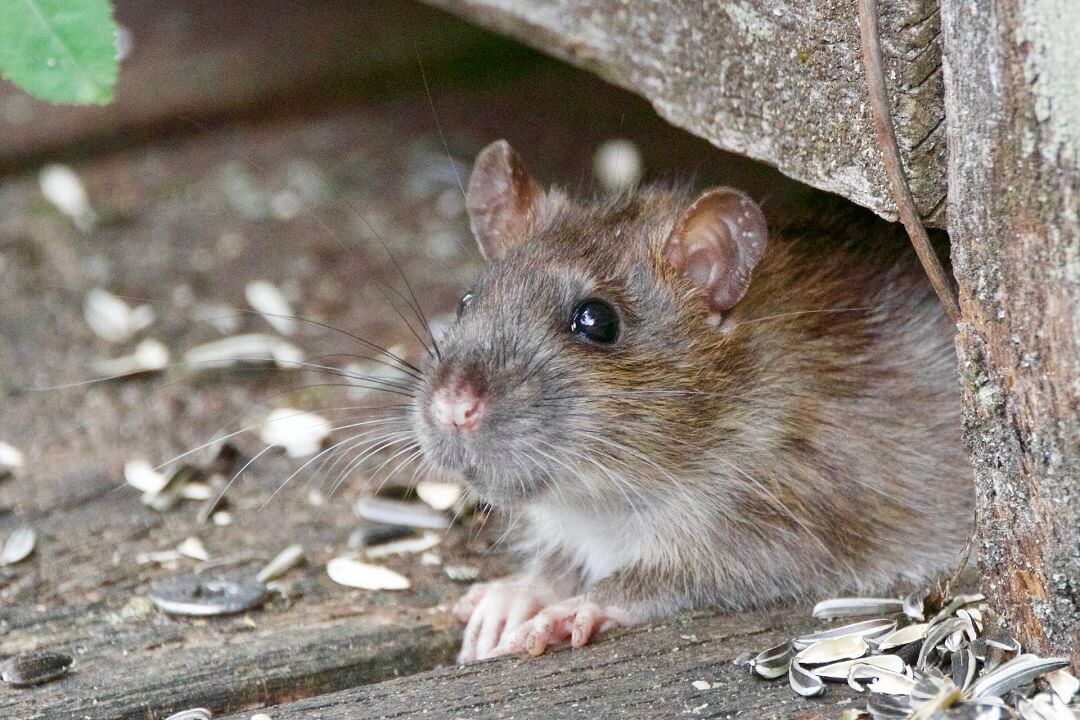No home or business owner wants to share their space with rats or other rodents. These rodents are nocturnal, meaning they are most likely active when you are sound asleep. By the time you actually see a rat in your home or business, chances are you already have an established infestation. However, rats do leave behind many different signs that can give away their presence and alert you to a potential infestation well before you ever see a rat scurry across your floor or countertop.
Key takeaways
- Rats are nocturnal and spend the day well hidden from view, often making their nests in walls or under appliances. They will, however, leave behind signs of their nightly activity that can give away their presence in your home or business.
- While rats and mice often leave similar signs of activity, there are ways to tell the difference between these two common rodents and get a better idea of what you are up against.
- Using flour or baby powder can help you locate and track rat movement throughout your home or business.
What to look for to identify signs of a rat infestation
Because rats are most active at night, homeowners are more likely to see signs of an infestation than they are to see an actual rat. Here we look at some common signs of a potential rodent infestation and how to tell whether you have a mouse or a rat problem.
1. Rat droppings
Rodent droppings are one of the nest signs of a rodent infestation. Fresh droppings will be dark and moist, while older droppings tend to dry out and become gray in color. Rat droppings are shiny black in color, oval in shape, and can be up to ¾ of an inch long and often concentrated in areas where they sleep or eat. A rat will produce up to 40 droppings each night, so if you are finding fresh droppings, chances are you have a current infestation. In contrast, mice droppings are smaller in size, elongated, and have pointy ends.
2. Rub marks
Rodents often use established routes along walls and baseboards in order to move around your home in search of food and water. When they do this, they rub their body against the surfaces, leaving behind rub marks from grease and dirt found in their coat. In general, rats are cleaner than mice, so more pronounced rub marks may be an indication of a mouse infestation than rats.
3. Rat holes
Rats are known for digging burrows for shelter, food storage, and nesting, so you may find holes around the perimeter of your home or business. In addition, rodents like rats and mice will chew holes through walls in order to get to where they want to go. Rat holes may be larger, and mice holes may have distinct rub marks around the hole.
4. Gnaw marks
Both rats and mice will chew and cause damage to walls, floorboards, electrical wiring, and just about anything that gets in their way or they feel like chewing. Rat gnaw marks will be much larger than mouse marks and should be easily identifiable. You may also find gnaw marks in food packaging that rats chew through in order to access food.
5. Rat nests
Rats look for soft items to make their nests. Rat nests are usually found in attics, under eaves, in basements, or even between walls. They will shred the nesting material, such as insulation, cardboard, or clothing to make soft nests where they live and breed. You will likely find droppings around the nest area and may even see baby rats within the nest.
6. Scratching noises
Rats are nocturnal creatures, so they are most active at night. If you are awake and hear scratching or gnawing sounds coming from the walls or ceiling, it may be a good indication that you have active rats inside your home.
7. Foot and tail marks
Rats can leave footprints and tail marks in areas of dust. These are often easier to see in areas with less traffic where dust can build up. However, if you find these footprints, it can be difficult to determine if they represent active rat activity. A simple bag of flour or baby powder can help you determine if there is current rat activity. Simply sprinkle some flour or powder along the path where you think rats may be traveling and examine the following morning for new signs of tracks.
8. Foul odor
A pungent, musky odor throughout your home or business can often be a sign of a rat infestation. When these rodents move in, they leave droppings and urine throughout the home and, as this builds up, the smell can become overpowering and nearly impossible to eradicate as it is often due to urine and dropping within the walls.
9. Urine puddles
Rats have larger bladders than mice and will urinate just about anywhere, often leaving behind a small puddle of urine. While this may look like a small drop of water on the floor, it will have a distinct musty smell. If you start seeing puddles or the musty smell gets worse, chances are you have a rat or rodent problem.

What attracts rats to your house?
Rats typically enter homes that are easy to access, provide comfortable shelter, and a plentiful food source. Some common things that are more likely to attract rats to your home include:
- Structural issues: Foundational cracks and openings around your home provide easy access to your home for most rats. In addition, foliage that falls onto the roof, such as large tree branches, can provide another easy access point for rats to gain entry.
- Plumbing problems: Water leaks are a large attraction for rats and other rodents. This easy supply of water creates another appealing point for the rats.
- Easy access to food: Food left out in the open, such as dirty dishes in the sink, unsealed grain in the cupboards, and pet food are three main components that attract rats into your home. These easy food sources provide a regular source of food, making your home more attractive as a nesting location.
- Clutter: A cluttered home provides many places where a rat can hide and nest. Keeping your home clutter-free makes it less appealing to rats and other rodents.
Frequently asked questions
Here are some frequently asked questions that address additional ways to identify potential rat infestations.
How do I know if I have rats or mice?
Distinguishing between a rat or mouse infestation depends on a few different signs. Mouse droppings are much smaller in size and have pointed ends while rat droppings are larger in size and oval in shape. Mice are also more likely to leave behind an oily mark on walls or baseboards where they travel.
Where to look for rats outdoors?
Rats, such as roof rats, are often found in trees, along wires and fencing, or along outdoor pathways. Rats that live outside usually dig large burrows, so looking for rat holes is usually a good place to start. They will make these burrows close to food and water sources, so areas of thicker vegetation or close to outdoor garbage cans can be the best place to start looking.
Where to look for rats indoors?
Rats will hide in attics, under appliances, and between the walls of your home or business. Moving large appliances, such as stoves or refrigerators, may reveal a rat and send them running across the floor.
What to do when you find signs of rats in your home?
If you find signs of a potential rat infestation or see a rat scurrying across your kitchen floor or countertop, it is time to call a professional rat control service that specializes in rats and rodents. Rats can quickly spread dangerous germs and bacteria throughout your home and should be eliminated immediately. Unlike mice, rats are more prone to bite and can cause rat-bite fever, making them more dangerous to try and eradicate on your own. If you see any of these signs that rats are present, call the exterminators right away.
Helping you eliminate rats and keep your home or business rat-free
No one wants to see a big rat scurrying across the floor or sneaking a snack out of the pantry, and the team at Insight Pest Management is here to help you eliminate your rodent infestation. Our experts will come out and identify the infestation, document any potential damage they have created, establish a unique treatment plan to fit the needs of your home, and help develop a preventative plan to keep your home rat-free for the long term. To learn more, schedule a free quote today.


